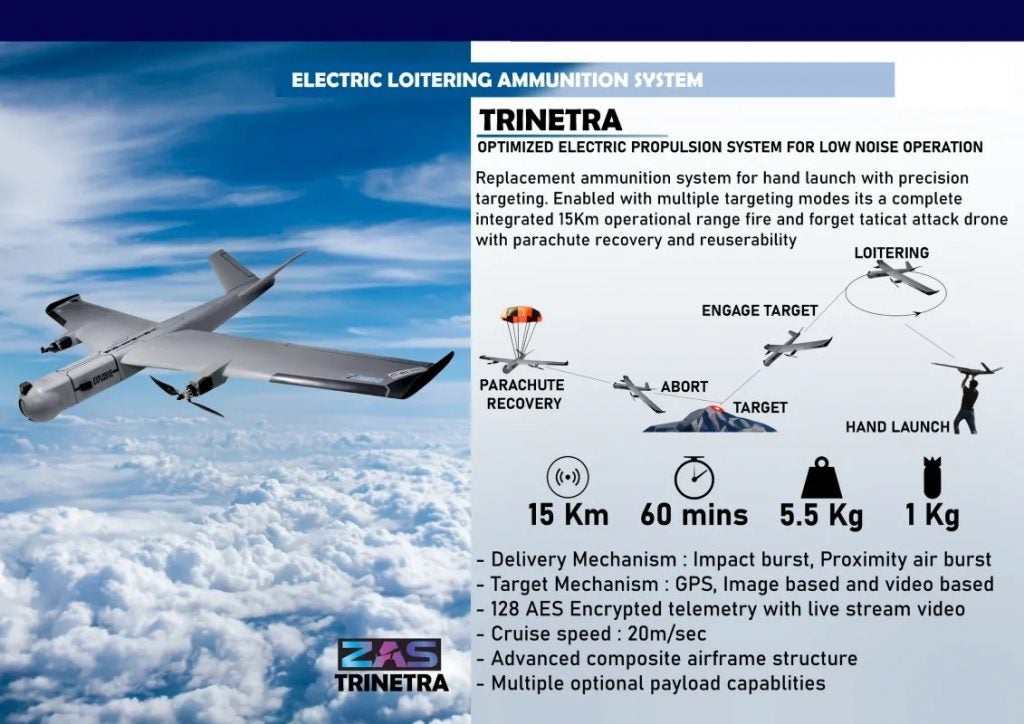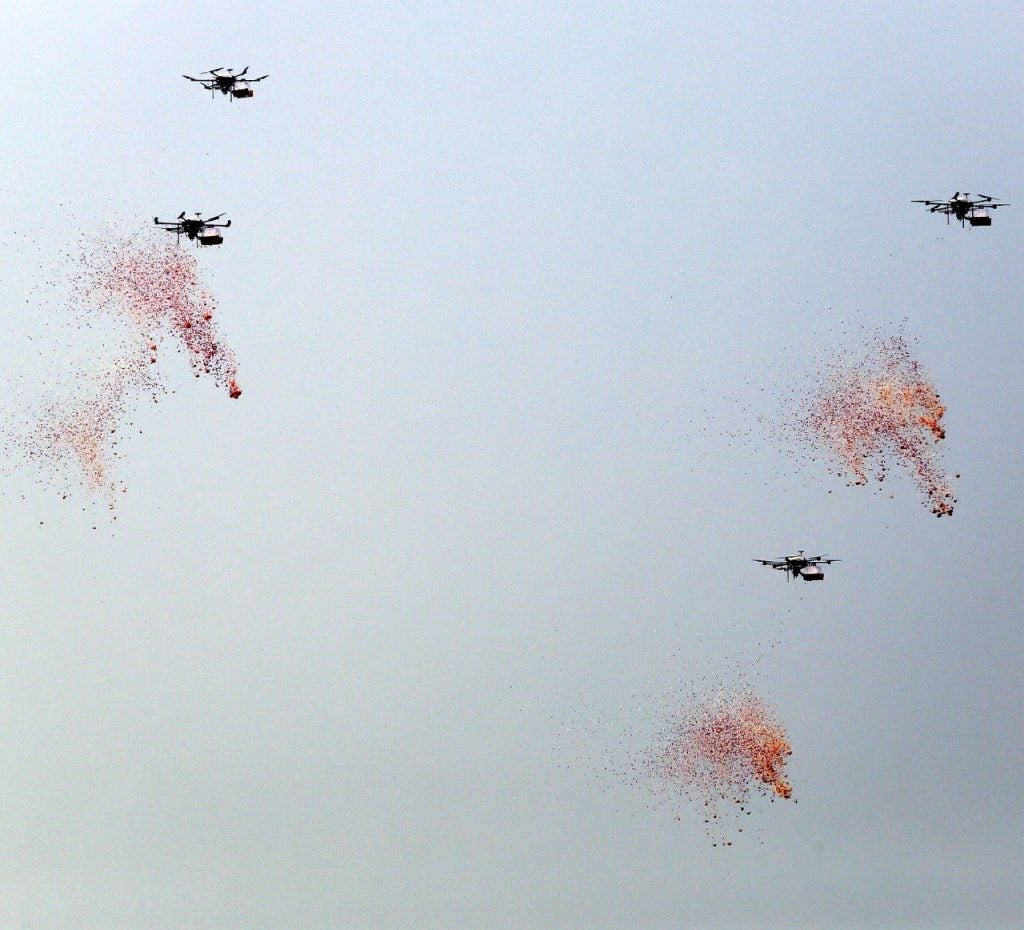Indian Army Prepares To Procure Hundreds Of Armed Swarm Drones and Loitering Munitions
The Indian Army has released Expressions of Interest (EoI) for the procurement of Autonomous Surveillance and Armed Drone Swarms (A-SADS) for desert/plains as well as High Altitude Areas (HAA). This follows multiple recent developments regarding swarm drones and loitering munitions for the Army and Indian Air Force (IAF).
While the EoI for A-SADS (Desert/Plains) was released on September 20, the one for A-SADS (HAA) was released on September 22. A-SADS would enable tactical commanders with a force multiplier capable of surveillance, close reconnaissance based on alternate surveillance inputs and engagement of various targets. Potential targets include vehicles, artillery, air defence systems and command and control centers.
The Make-II project will be split into two phases. During the prototype development stage, twenty drones of each A-SADS type will be developed. These can carry a wide range of payloads. While 75% of the drones will be equipped with standard EO/IR sensors, the rest would feature higher performance EO/IR sensors with laser range finders. The drones will be capable of carrying three types of munitions: HE (Fragmentation) bombs of 3kg and 5kg class and shaped charge top attack munitions with 100mm RHA penetration.
The Army intends to procure five sets of A-SADS (Desert/Plains) drones, each set consisting of 50 units. Meanwhile 400 A-SADS (HAA) drones are required, with five sets having 50 drones along with two sets of A-SADS (HAA) having 75 drones each. While the sets with 50 drones are intended for various pivot corps, the two 75 drone A-SADS (HAA) sets would be deployed with strike corps of the Army.
A set of 50 drones will include two ground stations, 50 each of 3kg and 5kg HE(Fragmentation) bombs and 20 top attack munitions. 15 drones would be configured for aerial data relay. For the two sets of 75 A-SADS (HAA) drones, each set would include four ground stations, 75 each of 3kg and 5kg HE(Fragmentation) bombs and 30 top attack munitions. 25 drones would be configured for aerial data relay.
A-SADS will be battery powered and weigh under 50kg each. Size during launch should be within 3.5×2.5m. A-SADS (HAA) will be able to be launched at altitudes over 4,500m which is 1,500m more than the requirement for the desert/plains variant. With aerial data relay, the operating range of A-SADS (HAA) should be 30km and 50km for the desert/plains version. Endurance should be two and three hours respectively. The VTOL drones would be capable of multiple modes of operation including a fully autonomous mode.
Each swarm set can split up into smaller groups for operational requirements. The drones would be capable of utilizing multiple global positioning systems and operate in GPS denied environments. Procurement of A-SADS had been granted Acceptance of Necessity (AoN) on July 26. The Indian Army had announced on August 26 that it had inducted swarm drones into the mechanised forces. The Army had also ordered 100 heterogeneous swarm drones from Newspace Research and Technologies in September 2021, to develop concepts of operations and explore the technologies involved. Swarm drones by Raphe Mphibr were also ordered.
The IAF meanwhile has launched the second edition of the Mehar Baba Competition to develop swarm drones. The first edition launched in 2018 aimed to develop 50 drone swarms for disaster relief operations and Newspace Research and Technologies was declared to have the best swarm architecture in 2021.
The second edition aims to achieve “Swarm Drone Based Foreign Object Detection (FOD) on Aircraft operating surface.” The three phase competition would conclude in October 2023. The participants are expected to showcase a collaborative VTOL UAV solution equipped with sensors and secure communication that can scan the operating surfaces, detect FOD and provide its image and accurate location at a centralised monitoring station.
The launch and recovery of the drones could be manual or machine based on ground. It would detect and report sub-centimeter objects in runways, taxiways and aprons. The entire activity of scanning, detecting and reporting objects in all of these areas are to be completed within 30 minutes. EO,IR, MMW radar, LIDAR or other sensors may be employed for detection.
Multiple DRDO laboratories are also involved in the development of various swarm drones. One of them is a 10 drone multi-copter type swarm with 8kg payload, 20kg takeoff weight and range of 35km with an endurance of 45 minutes. Swarms with 150 light drones are also being developed.

Meanwhile, India continues to aggressively pursue procurement and development of loitering munitions. Tata Advanced Systems Limited (TASL) has tested a VTOL loitering munition named ALS 50. The Economic Times reported that the munition was tested in a desert environment and will soon be inducted into service. The Army has issued an RfP to procure Trinetra loitering munitions developed by Z Motion and Solar Group. These munitions had completed trials in Ladakh in June 2022. As a part of the Defence Technology and Trade Initiative (DTTI), India and the U.S. are also developing air launched drones.
The EoI documents for A-SADS also notes that drone technology has been a force multiplier in various recent conflicts and that India also faces such threats from its adversaries. With the development and induction of such niche systems, the Indian Armed Forces seeks to fill “urgent operational requirements.”

